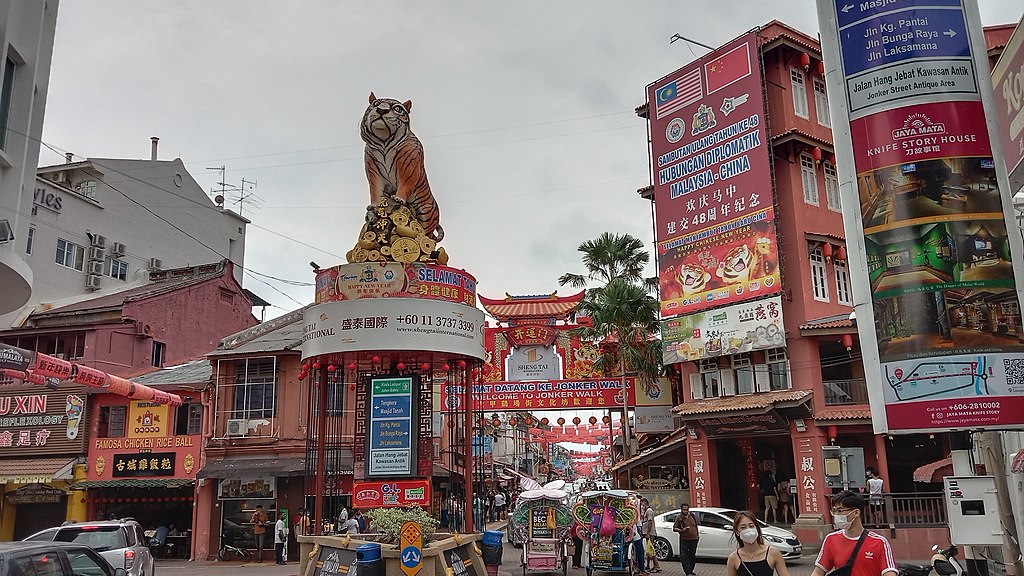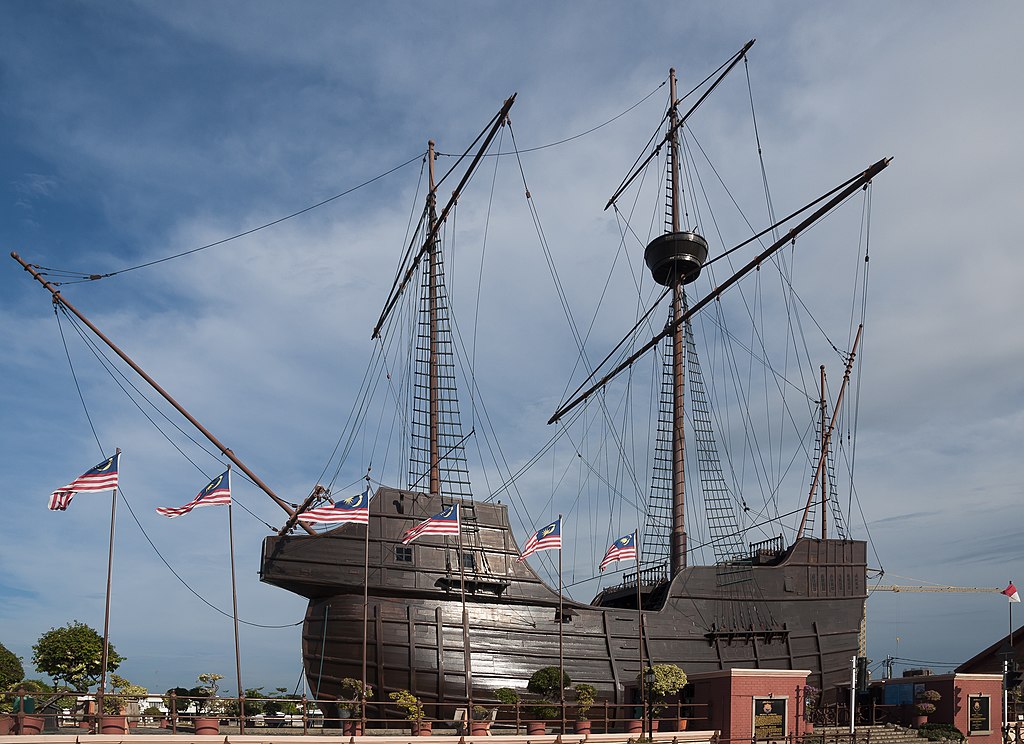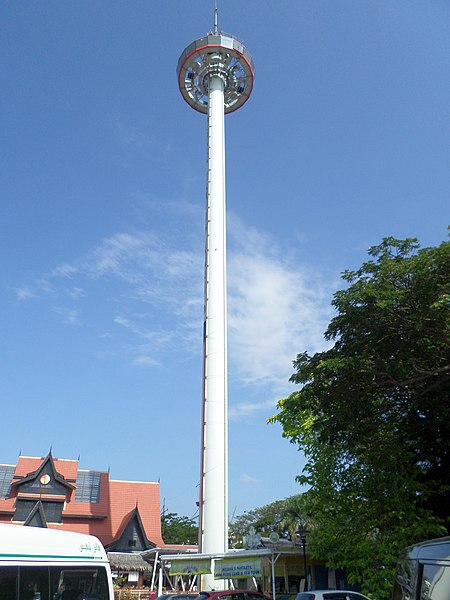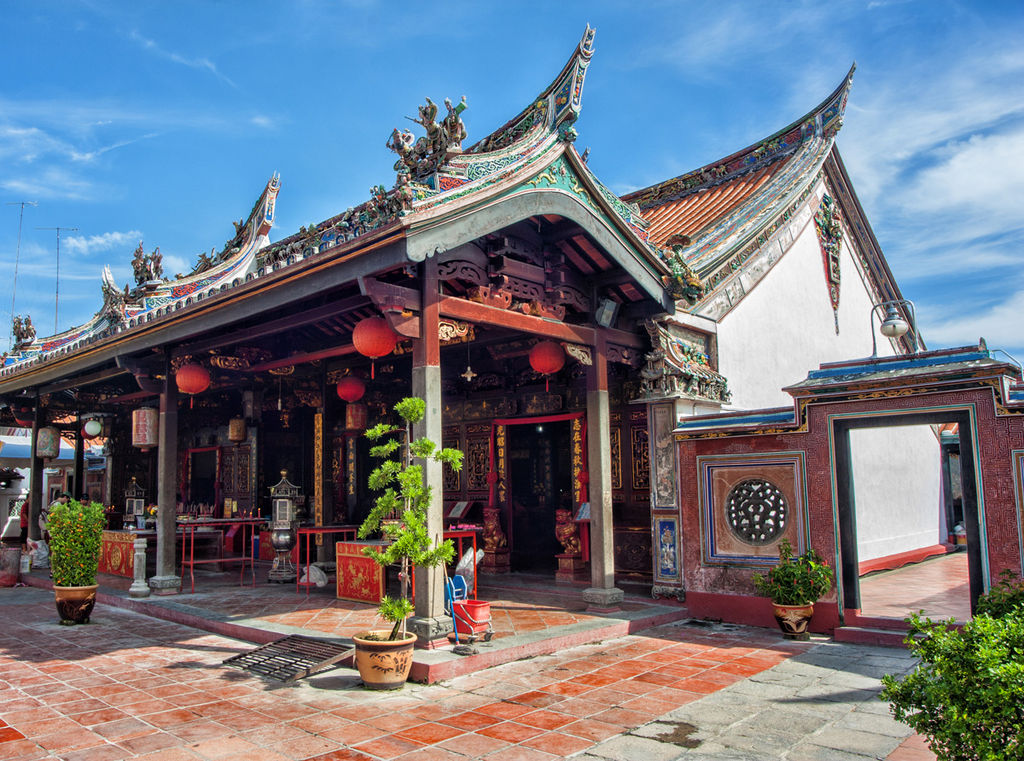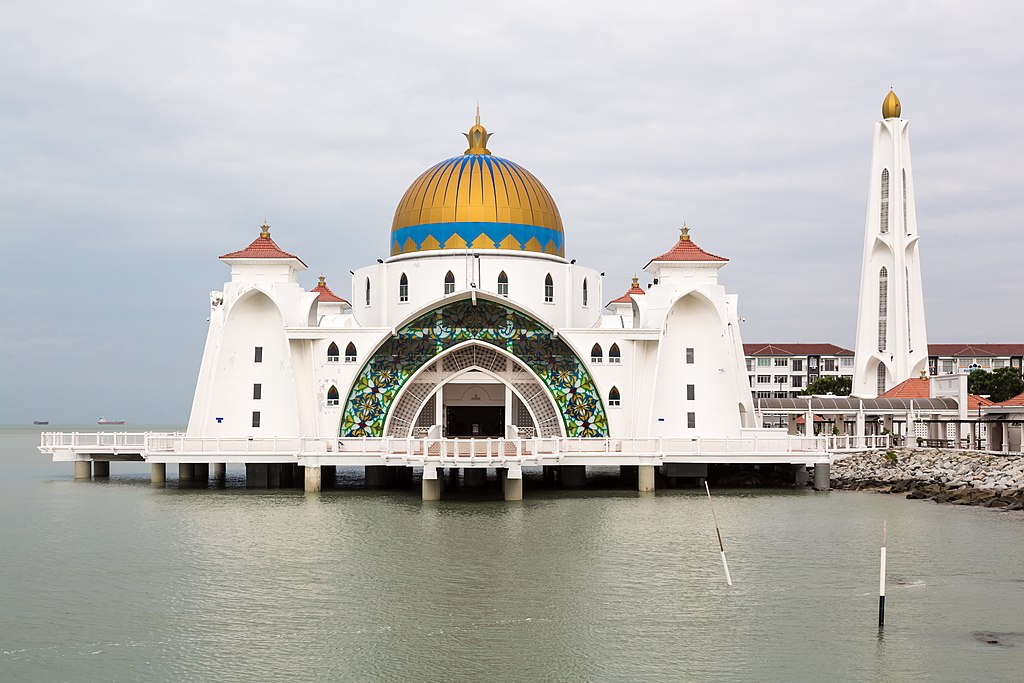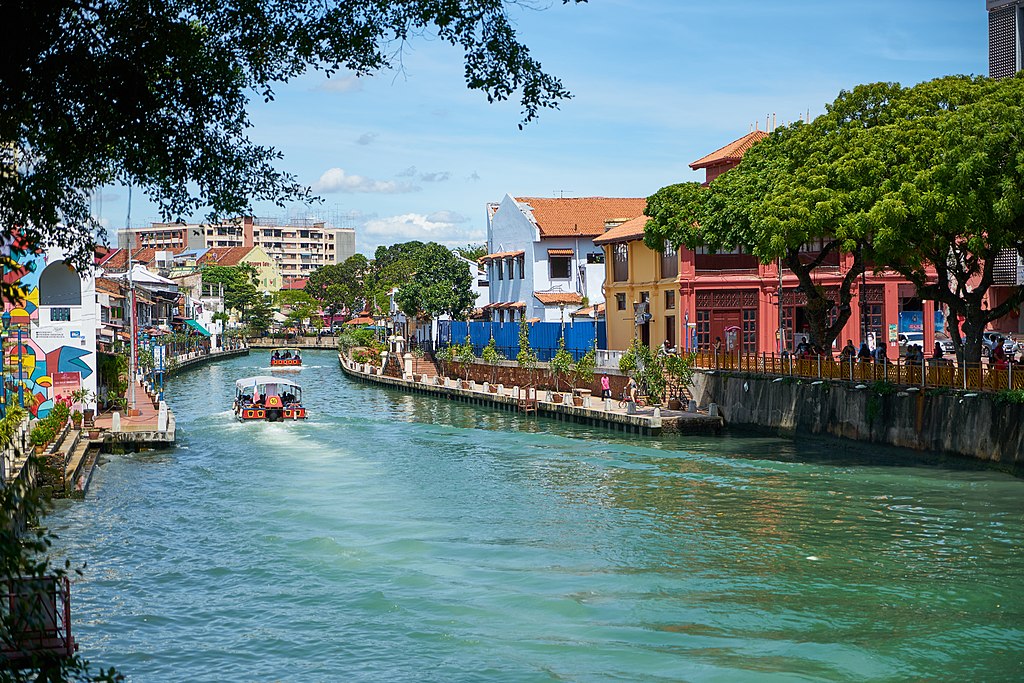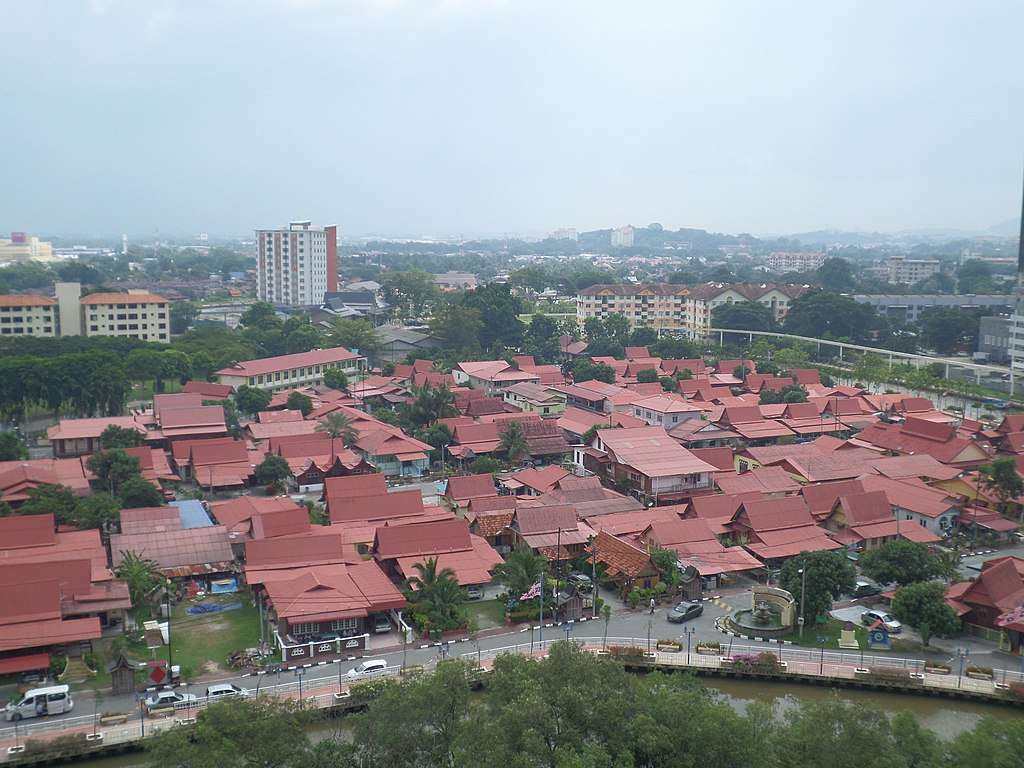Malacca Travel Guide, Itinerary, 22 Things to Do & More
Located on the southwest coast of the Malaysian Peninsula, Malacca (also spelled Melaka) is a UNESCO World Heritage Site filled with history, culture, and a blend of Portuguese, Dutch, and British legacies, intertwined seamlessly with Malay, Chinese, and Indian influences.
For many Malaysians, including myself, a trip to Malacca is more than just a tourist excursion — it’s a nostalgic journey back to our childhood. Almost every Malaysian kid has at some point embarked on the ‘pilgrimage’ to Malacca, like a rite of passage, either on a school field trip with their history teacher or on a family outing during the holidays.
My first time there was with my late mother — on one of those rare, almost mythical occasions when she was suddenly (and very uncharacteristically) in the mood for travel. Join me as I take you down memory lane in this historic city.
Table of Contents
ToggleOverview of Malacca
History
Geography
The state of Malacca sits on the southwestern coast of the Malaysian Peninsula, opposite Sumatra, and covers an area of 1,664 km2 (642 sq mi). With the exception of some small hills, Malacca is generally a lowland area with average elevation below 50 meters above sea level.
Read: Hiking Bukit Batu Putih (Near Malacca): Scenic Trail with Breathtaking Views of the Sea
Population
Malacca’s population is diverse, comprising various ethnic groups including Malays, Chinese, Indians, indigenous peoples, and some Eurasian descendants of the colonists. As of recent estimates, the population stands at around 940,000 people.
Language
Just like the rest of the country, Malay (Bahasa Malaysia) is the official language, but English, Chinese, and Tamil are also widely spoken.
Best Time to Visit Malacca
The climate in Malacca is hot and humid year-round.
You may find conflicting information on the internet about “the best time to go to Malacca”, but I’ve been there many times, and honestly I’ve never experienced it being any less hot at any time of the year. Even when I went during the so-called “rainy season”, it was just gloomy and drizzling for a bit in the morning, and then it went back to scorching, burn-your-skin hot by noon.
So, weather-wise, any time of the year is a good time to visit.
Personally, when planning a trip to Malacca, I would worry more about the crowd (and therefore traffic).
If you don’t fancy big crowds or heavy traffic, avoid going on public holidays like Chinese New Year, Christmas, and Eid. Be sure to check both Malaysian public holidays and Singaporean ones because Malacca is a very popular destination for Singaporean tourists and weekend trippers. During the peak tourist season, the prices for accommodation and activities may be higher too.
However, if you enjoy festivities, by all means, go during the holidays or weekends and soak in the lively vibes! The Jonker Street Night Market is also only available on weekends (Friday – Sunday).
How to Go to Malacca
By Air
Malacca does have its own airport, that is, Malacca International Airport (MKZ), and it used to have flights going to and from Penang and Indonesia, but most, if not all of these flights have been discontinued due to low volume. Most travelers prefer flying into Kuala Lumpur International Airport (KUL) and taking a bus or taxi to Malacca (approximately a 2-hour drive).
By Bus / Car
Buses from Kuala Lumpur or Singapore are convenient and comfortable. Malacca is well-connected by highways and easily accessible by car.
Journey time is approximately 2 hours from Kuala Lumpur and 3 hours and a half from Singapore (not including border crossing and immigration processes). For that reason, many travelers choose Malacca as a midway stopover point when traveling overland between Kuala Lumpur and Singapore.
Bus tickets can be purchased at the bus stations or online:
Getting Around in Malacca
Getting around in Malacca is relatively convenient, with several transportation options available:
Walking: Many of Malacca’s attractions, particularly in the historic city center, are within walking distance of each other. Exploring on foot allows you to take your time discovering hidden gems along the way.
Bicycle: Renting a bicycle is a popular and eco-friendly way to explore Malacca. Several rental shops offer bicycles for hourly or daily rates, allowing you to pedal around the city at your own pace.
Trishaw: Taking a ride on a colorful trishaw is also a fun and unique way to experience Malacca. However, the trishaws, with their vibrant decorations and loudspeakers playing music, can be a little too touristy and not authentic anymore.
Taxi/Grab: Taxis are readily available in Malacca and can be hailed on the street or booked in advance. Alternatively, you can use ride-hailing services like Grab for convenient and affordable transportation around the city.
Local Buses: Malacca has a network of local buses that connect various parts of the city and surrounding areas. While not as frequent or extensive as in larger cities, buses can be a budget-friendly option for getting around.
Car Rental: Renting a car provides flexibility and convenience, especially if you plan to explore attractions outside of the city center. Several car rental agencies operate in Malacca. However, I wouldn’t recommend renting a car if you’re only going to explore the Old Town. Streets are narrow and there are very limited parking spots. More often than not, you’ll end up having to park outside of the town center and walk the rest of the way.
Things to Do in Malacca
1. Visit A Famosa - a 16th-Century Portuguese Fortress
This iconic fortress, built by the Portuguese in the early 16th century, is one of the oldest European architectural remnants in Southeast Asia.
Most of it may be in ruins now, but the gatehouse — Porta de Santiago — still stands, weathered but proud. These old stones have seen battles, shifting empires, and centuries of change, and somehow, they’re still here, holding onto the stories that shaped this UNESCO World Heritage Site.
2. Climb St. Paul's Hill
Ascending St. Paul’s Hill is a journey both physical and historical. At the top, the ruins of the old 16th-century St. Paul’s Church stand quietly, watching over the city like they’ve been doing for hundreds of years.
The view from up there is stunning — you get a mix of old and new, where historic buildings and modern high-rises share the same skyline. It’s one of those spots where you really feel how much history Malacca holds.
3. Walk Around the Dutch Square
Situated in the heart of the heritage city, this square serves as a focal point for visitors with its distinctive red buildings, remnants of Dutch colonial rule.
At the center of the square stands the Christ Church, and nearby is the towering Stadthuys, once the official residence of Dutch governors, now houses the fascinating Museum of History and Ethnography.
4. Visit Baba Nyonya Heritage Museum
Tucked inside a beautifully preserved 19th-century townhouse, the museum gives you a peek into the lavish world of the Baba Nyonya — descendants of Chinese immigrants who made their home here and blended cultures through generations of intermarriage with the local Malay community.
Step inside, and you’re surrounded by ornate woodcarvings, colorful porcelain tiles, and richly detailed furnishings, every corner showing off that unique mix of Chinese, Malay, and European influences that make Peranakan culture so special.
Join one of the guided tours if you can. They do a great job of bringing the place to life and giving you a deeper look at the traditions, stories, and legacy of the Peranakan community in Malacca.
5. Try Peranakan Cuisine
Peranakan cuisine is where Chinese and Malay influences come together in the most delicious way. Think bold spices, fresh herbs, and layers of flavor that hit all the right notes. Must-tries include nyonya laksa, a creamy, spicy noodle soup that’s pure comfort in a bowl, and ayam pongteh, a slow-cooked chicken dish with a rich, savory kick from fermented soybeans.
And don’t leave without trying some Nyonya kuih: colorful, bite-sized desserts made with glutinous rice flour, coconut milk, and pandan. Sweet, soft, and just a little bit addictive. If you’re up for it, joining a Nyonya cooking class is a fun way to dive even deeper into the flavors.
Also Read: Malacca (Melaka) Foodie Adventure: Mouthwatering Specialties of the Historic City
6. Rent a Kebaya Nyonya
The Kebaya Nyonya, is an elegant traditional attire of the Peranakan community, consisting of an embroidered blouse and a batik sarong. In Malacca, there are several shops where you can rent a full set of kebaya for a few hours or the whole day. For an additional fee, you can also have your hair and makeup done.
Then, you can stroll along the historic streets and pose for photographs against the backdrop of colonial architecture. You’ll be delighted to see how photogenic the whole town is — almost every corner is insta-worthy!
7. Explore Jonker Street
Right in the heart of Malacca’s Chinatown, Jonker Street is always buzzing. It’s lined with colorful shophouses, quirky little boutiques, and the kind of food stalls that make you stop in your tracks just to take in the smell.
During the day, it’s all about browsing—antiques, handmade crafts, and souvenirs you’ll probably convince yourself you need. But come weekend nights, the street really comes alive. It turns into a full-on food fest, with hawkers dishing out everything from smoky satay to sweet, sticky Nyonya treats. You’ll want to come hungry.
8. Visit Malacca Sultanate Palace Museum
The Malacca Sultanate Palace Museum is a lovely tribute to the glory days of the Malacca Sultanate — one of the most important periods in Malaysia’s history. The building itself is a replica of the original 15th-century palace, and with all its intricate wood carvings and traditional Malay design, it really does feel like stepping back in time.
Inside, you’ll find everything from royal outfits to old weapons and artifacts, all telling the story of Malacca’s royal past.
9. Visit the Maritime Museum in a Ship Replica
Did you know that Southeast Asian seafarers were navigating open seas and trading across the Indian Ocean and South China Sea long before European ships arrived in the region?
Housed within a striking replica of the Portuguese ship Flor de la Mar, this multi-story museum walks you through Malacca’s role as a key port city from the days of the Malay sultanate to the arrival of the Portuguese, Dutch, and British.
You’ll see old maps, navigational tools, ship models, and artifacts that bring centuries of maritime history to life.
10. Go Up the Taming Sari Tower
Named and designed after the legendary sword of a Malay warrior, the 110-meter-tall Taming Sari Tower is Malaysia’s first and tallest gyro tower, offering visitors a 360-degree view of the historic cityscape as its glass-enclosed viewing platform rotates and ascends to the top.
The observation deck is able to accommodate 80 people per viewing session, which lasts about 7 minutes each.
Visitors can expect to see views of the Straits of Malacca, the Malacca River, the Maritime Museum, the St. Paul’s Hill, and many more!
Another option for a bird’s eye view of the city is from The Shore Sky Tower.
11. Design Your Own Cup Noodles
Mamee is a beloved Malaysian childhood snack brand that has been around for as long as I can remember. Now, they have actually opened their own museum called Mamee Jonker House on Jonker Street that also doubles as a cafe and merchandise shop.
Apart from showcasing a variety of the iconic noodle snacks, the interactive museum also allows visitors to unleash their creativity at the DIY noodle cup station, where they can customize their own Mamee noodles toppings and seasonings, and even design the cup themselves!
12. Visit the Oldest Chinese Temple in Malaysia
Showcasing beautiful architecture and cultural richness, the Cheng Hoon Teng Temple is the oldest functioning Chinese temple in Malaysia. The temple site was founded during the Dutch era in 1645, although there is some controversy about the exact time the temple was built. Some inscriptions found in the temple suggest that it might already have been there earlier in the 15th century.
In 2003, the temple was awarded a UNESCO award for outstanding architectural restoration.
13. Marvel at the Malacca Straits Mosque
The Malacca Straits Mosque, also known as Masjid Selat Melaka, is a majestic structure located on the manmade Malacca Island. When the water level is high, the mosque appears to float on the water, creating a mesmerizing sight, especially at night.
Within the mosque compound stands a 30-meter tall minaret, which serves a dual purpose as a lighthouse.
14. Go on a River Cruise
Winding its way through the heart of the city, the Melaka River has seen it all — from the days before the Sultanate to the Malacca we know today.
Back then, it was a buzzing trade route, packed with merchant ships from all over the world. These days, it’s a lot more laid-back, lined with riverside cafes, murals, and historic buildings. A 45-minute river cruise is one of the best ways to take it all in — especially at night, when the lights reflect off the water and the whole place feels a little bit magical.
15. Ride a Trishaw
Hopping on a trishaw in Malacca is a fun, slightly quirky way to take in the sights. These colorful, over-the-top tricycles — often blasting music and covered in flowers or cartoon characters — also double as a moving photo op. The trishaw drivers usually have great stories to share, pointing out landmarks and slipping in bits of local history along the way.
16. Wander Through Kampung Morten Traditional Village
Named after Frederick Joseph Morten, a British land revenue collector during the British Malaya era, ‘Morten Village,’ is a traditional Malay village that has been turned into a tourist destination after being designated a heritage village under Malacca’s Preservation and Conservation Enactment in 1989. Today, it boasts over 100 well-preserved traditional Malay houses.
17. Have a Day of Fun at Water Parks
Malacca has a few water parks that are perfect for cooling off in the tropical heat, and having a blast while you’re at it. Whether you’re into adrenaline-pumping slides, relaxing lazy rivers, or just splashing around in wave pools with the kids, there’s something for everyone.
Popular water parks in Malacca include the Melaka Wonderland, Bayou Lagoon, and the A’Famosa Water Theme Park, located within the expansive A’Famosa Resort.
18. Drink Coconut Shake at Klebang Beach
Klebang Beach is what you would imagine a postcard-worthy beach to look like, with its sandy shores and coconut palms swaying lazily in the breeze.
But if I’m being honest, what really steals the show is the coconut shake. You’ll find it at the humble beachfront stalls: a sweet, creamy blend of fresh coconut water, coconut milk, shaved ice, and a generous scoop of coconut ice cream on top. It’s cold, rich, and exactly what you need when the sun’s doing its thing.
19. Go Paramotoring
Not many people know this, but Malacca is actually a great spot for paramotoring, thanks to its wide open spaces and stunning sea views.
You’ll be strapped into a comfy harness under a motorized paraglider wing, then off you go, soaring through the sky. The best part is you don’t need any experience at all. A certified pilot takes care of everything while you just sit back, take in the view, and enjoy the ride.
20. Visit Malacca Heritage Studios
Malaysia Heritage Studios, formerly known as Mini Malaysia and ASEAN Cultural Park is a cultural theme park, featuring two distinct sections. One segment highlights traditional homes from each Malaysian state, while the other showcases traditional houses from every Southeast Asian country. Additionally, each house serves as an art gallery and museum.
21. Visit the Portuguese Settlement
For a different side of Melaka’s heritage, head to the Portuguese Settlement — home to a community of Kristang people, descendants of 16th-century Portuguese colonists.
The village is especially lively in the evenings, with seafood restaurants by the water and a small square where locals often gather. If you’re visiting around Christmas or Festa San Pedro in June, you’ll see the whole place beautifully decorated and alive with music, lights, and tradition.
22. Visit the Crocodile Farm
The Malacca Crocodile and Recreational Park is a privately-run crocodile farm and zoo that spans over an area of 3.5 hectares, making it the largest crocodile farm in Malaysia. Although it mainly exhibits crocodiles, the farm also hosts other reptiles, such as snakes, turtles, tortoises, and terrapins, as well as some birds and mammals.
On weekends, the farm features live crocodile shows and feeding demonstrations.
How Much Time to Spend in Malacca
Day trips to Malacca from Kuala Lumpur or Singapore are very popular, considering it’s only about 2 – 3 hours’ drive from either location. Most of the attractions in Malacca are clustered in one area, that is in the old town, so you can see quite a lot in one day. If you use your time efficiently, you can even make it to the other attractions that are a little outside of the main touristy area.
However, if you like to take on a more laid-back approach and maybe explore the Jonker Street Night Market till late, I would highly recommend staying for at least one night. Besides, Malacca has so many beautiful hotels that are set in historical buildings, it would be a shame not to try any.
Where to Stay in Malacca
Malacca offers a wide range of accommodation options to suit various preferences and budgets, including riverside resorts, dormitories, modern international chains, and boutique hotels set in historic buildings.
Popular locations to stay in Malacca are:
1. Jonker Street Area: Close to the night market, and where all the action is. Find boutique hotels, guesthouses, and homestays.
2. Bandar Hilir: Offers a mix of luxury hotels and budget accommodations, close to popular attractions like A Famosa and St. Paul’s Hill.
Practical Tips
- Accommodation Choices: Consider staying in one of the heritage hotels or boutique guesthouses for a unique and fully immersive Malaccan experience.
- Time Your Visit: Time your visit based on your personal preferences. Go on weekends and public holidays if you like the festivities and want to see the Jonker Street Night Market. Otherwise, avoid the peak periods. Try to arrive early in the morning so that you can do some exploring before it gets too hot outside, and then continue in the late afternoon.
- Beat the Heat: Malacca can be very hot, especially at midday. Bring a hat, sunglasses, and sunscreen. Don’t forget to stay hydrated.
What to Wear in Malacca
Although Malaysians are generally conservative, Malacca sees a lot of foreign tourists every day, therefore Western-style clothing is very common, including shorts, tank tops, skirts, and summer dresses. Due to the heat and humidity, go for something lightweight and airy. Do bring something to cover yourself with if you intend to visit religious sites.
Additionally, you will be doing a lot of walking, so comfortable footwear is a must.
Final Thoughts
With its rich history, cultural heritage, and UNESCO World Heritage Site status, it goes without saying that Malacca is the perfect destination for history buffs.
However, the city is also brimming with a variety of activities and attractions to keep all travelers entertained. Moreover, for those simply seeking Instagram-worthy snapshots, Malacca’s charming streetscapes and architectural gems offer plenty of opportunities for memorable photos.
Have you visited Melaka before? What did you like most about it? Share your experience in the comment section below.









